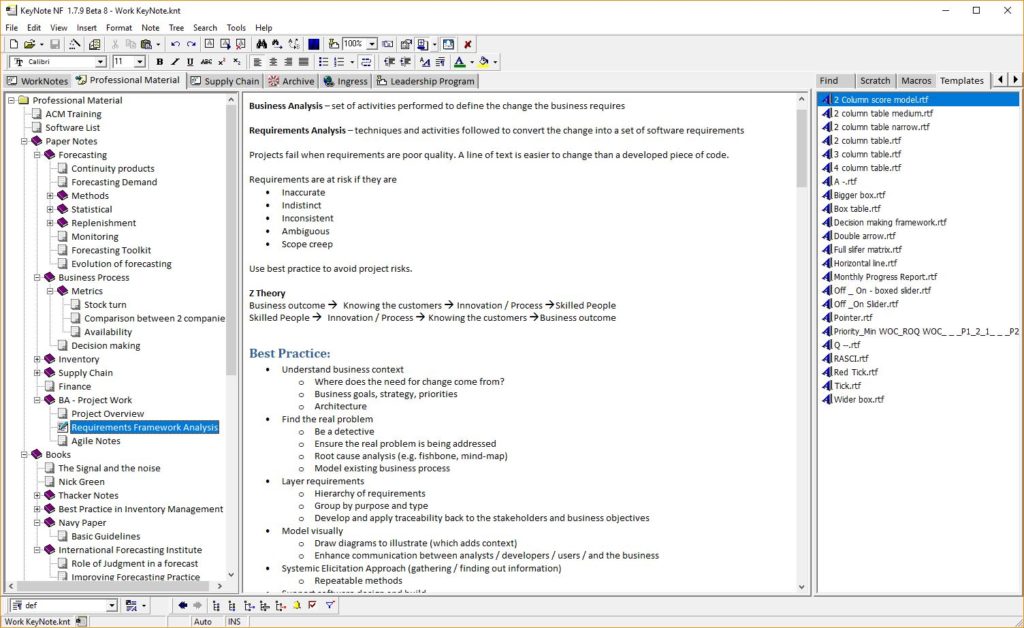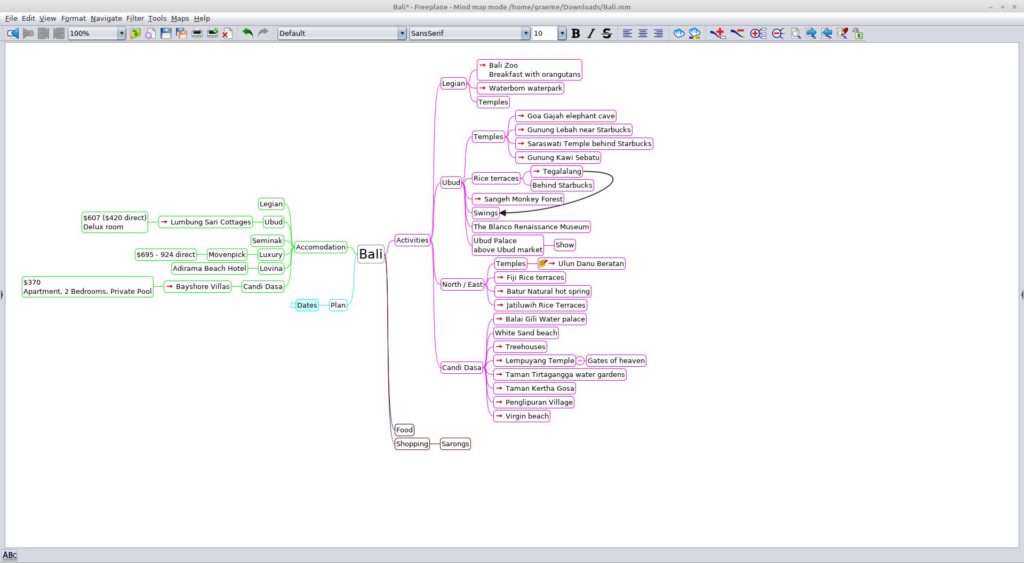I’m not a guru, or business book author. I’ve had the benefit of observing myself and team members at work for 20+ years, and was thinking the other day what I would pass onto anyone starting out a career
Manage Information
I use a tree based information manager – my notes in here are ready made outlines to drop into presentations and documents. This has saved me so much time and effort over the years, and helps with my anti-procrastination measures – a draft is progress in any language! Having your information at hand in an easy to navigate structure is a powerful work enabler.

Recommended tools are:
KeyNote NF http://code.google.com/p/keynote-nf/
Treepad lite http://www.treepad.com/treepadfreeware/
CherryTree notes http://www.giuspen.com/cherrytree/
Freeplane https://www.freeplane.org/wiki/index.php/Home

Most of these tools will run standalone off a USB key so there are usually minimal dramas with getting permission to use them on company PCs. See what works for you, while I prefer tree structures, you may find a wiki type structure works for you… e.g. http://www.tiddlywiki.com/
Read and Absorb
I try to read a couple of business and personal development books a year. While I may not come away from them with zillions of ‘Larry Lightbulb’ ideas, I often find at least a couple of interesting gems within. I tend to make handwritten notes while I’m reading, which I later type into Keynote (see tip #1). I have all my reading notes at hand which I can dip into any time I need a quick refresher.
Keep Your CV Up To Date
A few years ago I was made redundant from what I was sure (at the time) was a very secure job. Company management and owners can change at any time, and with market dynamics, can change direction quickly.
Keeping your CV up to date helps you track your achievements and helps you understand your worth. You need to know how good you are, and you always know areas you can improve upon. Even if your company has a self development program that tracks your achievements, you need to keep your CV current. If you have the security of a job pulled out from under your feet, you need to have your CV ready to go. I can’t stress this enough.
Poor Preparation Leads to Poor Performance
Slightly adapted from a cruder version used by a former manager of mine. I’ve seen this over and over, especially with presentations. Having a quick draft of a presentation enables you to spend time in fleshing it out and adding meaningful content. Remember my first tip with keeping your information.
Practice gives you more confidence and helps so much with timing. You can practice presentations alone in a meeting room or with a team member. Use your team for feedback. Practice your timing – you tend to speak a lot slower than you would think!
If your presentation is in an unfamiliar venue, get in early before anyone else arrives and get familiar with it – where you can stand, what the acoustics are like, what the lighting is like (and where are the projectors mounted and controlled from), find the remote clicker for the presentation, make sure the laser pointer works, get yourself a glass of water ready, chat with the other presenters and the MC if there is one.
A course in public speaking can really help http://powertalkinternational.com/ is one I have done. Even if you only complete the first couple of modules you will benefit. Some of it is fun too!
Document Tasks and Work-flows
It pays to have a document on what it is you and your team do. From time to time you typically get given additional tasks or roles, and as each of these are added, they typically displace something else. 6-12 months later someone will ask – hey what about the xyz report?
From a previous manager came the term ‘The Dam Wall’. This was a list of regular team tasks and activities with priority and time recorded against them. When a new task was added to the team’s workload, this is a useful reference to work out what can be ditched – either by you or in consultation with management. It became a useful tool that helped prevent trivial tasks with little importance being added.
The Dam Wall also became the outline of a training check-list and how to document for new team members.